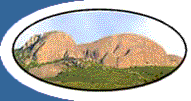21st century version of slavery
2010-07-08
IT is with utter dismay that I read in the newspapers that our children are the target of human trafficking. Therefore I feel obliged to give an overall picture of this global phenomenon. The US Trafficking in Persons Report for 2008 estimates that approximately 80 000 people are trafficked globally each year. In 2003 Unicef estimated that more than 1 000 000 children are trafficked annually. Human trafficking is a high profit/low risk form of criminality in which criminals can generate and maintain vast profits by recruiting and transfer of persons by coercion, abduction, fraud, deception and abuse of power. Exploitation includes prostitution of others or other forms of exploitation, like forced labour. Under International Law, child trafficking is a crime involving the movement of children for the purpose of exploitation. All those who have contributed and knew that what they did was likely to lead to the exploitation of the child (recruiters, intermediaries, document providers, transporters, corrupt officials, employers and exploiters) are traffickers. In the case of children, child trafficking occurs whether the child was moved voluntarily or by force. Most victims come from vulnerable groups and from unstable and economically dysfunctional areas which are often characterised by oppressions, with high levels of illiteracy, little social mobility and few economic opportunities. They are the targets and are the easiest to recruit and control. Women and children are even more likely to be targeted as they lack relative power. Victims may be transported internally, received and harboured in safe houses before being trafficked out of the country. The purpose of the transport is to alienate the victim that they become more vulnerable and thus easier to exploit. Victims are vulnerable in the sense that they do not have close relatives at their destination, do not have money or means to return home, or cannot speak the language. They are often physically and sexually abused. Look out for these types of exploitation: sexual exploitation (streets, bars, hotels, massage parlours, saunas, call-girls, escort agencies, sweatshops), forced labour, false and illegal adoptions, domestic servitude, street begging or peddling, and forced marriage. The UN office for Drugs and Crime (2008) states that the annual criminal turnover of this crime has grown enormously and is now the equivalent of that generated by drug trafficking, namely in the region of 32 billion US dollars. Victims are vulnerable to becoming drug dependent, suffer extreme violence, suffer damage from premature/forced sexual activity and be harmed through the exposure to sexually transmitted deceases, including HIV/Aids. At the traumatisation level, trafficking inflicts very grave and sometimes fatal harms to victims. How do traffickers operate? They make false promises for example offer you a job, a car, clothing, a job. Social media and the internet make it easy to prey on our children. It is time for us to act NOW - report suspicious behaviour to any police officer or social worker. Please note: A person who has been trafficked is not liable to stand trial for any criminal offence which was committed as a direct result of being trafficked (extracts from a seminar attended by judges). Patrick Ross
More
News
|


